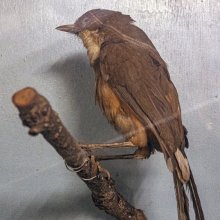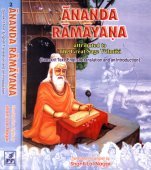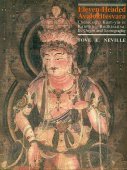Laughing: 1 definition
Introduction:
Laughing means something in Hinduism, Sanskrit. If you want to know the exact meaning, history, etymology or English translation of this term then check out the descriptions on this page. Add your comment or reference to a book if you want to contribute to this summary article.
Images (photo gallery)
In Hinduism
Natyashastra (theatrics and dramaturgy)
Source: Shodhganga: Elements of Art and Architecture in the Trtiyakhanda of the Visnudharmottarapurana (natya)Laughing (expression) is associated with Prakampita: one of the “seven movements of the chest” (in Sanskrit Dramas), as conveyed through Āṅgikābhinaya: one of the four divisions of Abhinaya or “ways to convey or represent one’s emotion to others”, according to the Nāṭyaśāstra and the Viṣṇudharmottarapurāṇa, an ancient Sanskrit text which (being encyclopedic in nature) deals with a variety of cultural topics such as arts, architecture, music, grammar and astronomy.—The āṅgikābhinaya includes the histrionic representation of the limbs which is simply known as physical gestures. There are five kinds of chest movements accepted by the Viṣṇudharmottarapurāṇa as well as the Nāṭyaśāstra. At the time of laughing, weeping or showing fear, the chest is thrown up and it is called prakampita movement.

Natyashastra (नाट्यशास्त्र, nāṭyaśāstra) refers to both the ancient Indian tradition (shastra) of performing arts, (natya—theatrics, drama, dance, music), as well as the name of a Sanskrit work dealing with these subjects. It also teaches the rules for composing Dramatic plays (nataka), construction and performance of Theater, and Poetic works (kavya).
See also (Relevant definitions)
Query error!
Full-text (+225): Hasa, Hasya, Hasin, Hasana, Parihasa, Upahasaspada, Hasyaspada, Hasita, Prahasita, Antarhasa, Vihasana, Prahasat, Hasakara, Kilakincita, Upahasa, Attahasin, Hasat, Smayin, Hasum, Hasatamukha.
Relevant text
Search found 200 books and stories containing Laughing; (plurals include: Laughings). You can also click to the full overview containing English textual excerpts. Below are direct links for the most relevant articles:
Brihad Bhagavatamrita (commentary) (by Śrī Śrīmad Bhaktivedānta Nārāyana Gosvāmī Mahārāja)
Verse 2.2.124 < [Chapter 2 - Jñāna (knowledge)]
Verse 2.4.101 < [Chapter 4 - Vaikuṇṭha (the spiritual world)]
Verse 1.5.58 < [Chapter 5 - Priya (the beloved devotees)]
Bhakti-rasamrta-sindhu (by Śrīla Rūpa Gosvāmī)
Verse 4.1.20 < [Part 1 - Laughing Ecstasy (hāsya-rasa)]
Verse 2.2.17 < [Part 2 - Ecstatic Expressions (anubhāva)]
Verse 2.4.126 < [Part 4 - Transient Ecstatic Disturbances (vyābhicāri-bhāva)]
Vakyapadiya of Bhartrihari (by K. A. Subramania Iyer)
Verse 3.9.82-84 < [Book 3 - Pada-kāṇḍa (9): Kāla-samuddeśa (On Time)]
Kathasaritsagara (the Ocean of Story) (by Somadeva)
Vetāla 23: The Hermit who first Wept and then Danced < [Appendix 6.1 - The Twenty-five Tales of a Vetāla]
Vetāla 20: The Brāhman Boy who offered himself up to save the Life of the King < [Appendix 6.1 - The Twenty-five Tales of a Vetāla]
Vetāla 11: King Dharmadhvaja and his Three Very Sensitive Wives < [Appendix 6.1 - The Twenty-five Tales of a Vetāla]
Garga Samhita (English) (by Danavir Goswami)
Verse 2.7.17 < [Chapter 7 - Kidnapping of the Calves and Cowherd Boys]
Verse 2.9.55 < [Chapter 9 - Brahmā’s Prayers]
Verse 6.18.26 < [Chapter 18 - In the Course of Describing the Glories of Siddhāśrama, a Description of the Rāsa-dance Festival]
Related products


